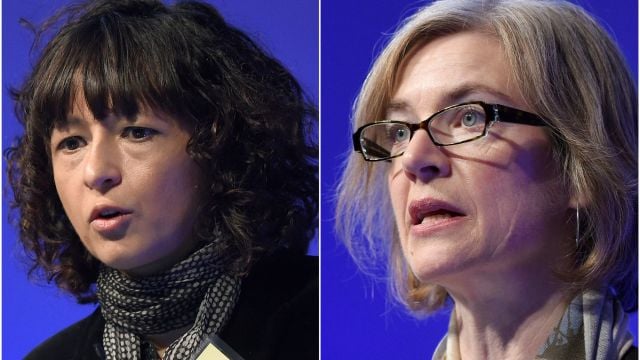The recipients were announced on Wednesday in Stockholm by Goran Hansson, secretary general of the Royal Swedish Academy of Sciences.
Working on opposite sides of the Atlantic, the pair developed a method known as CRISPR/Cas9 that can be used to change the DNA of animals, plants and microorganisms with extremely high precision.
“There is enormous power in this genetic tool, which affects us all,” said Claes Gustafsson, chair of the Nobel Committee for Chemistry.
“It has not only revolutionised basic science, but also resulted in innovative crops and will lead to ground-breaking new medical treatments.”
BREAKING NEWS:
The 2020 #NobelPrize in Chemistry has been awarded to Emmanuelle Charpentier and Jennifer A. Doudna “for the development of a method for genome editing.” pic.twitter.com/CrsnEuSwGDAdvertisement— The Nobel Prize (@NobelPrize) October 7, 2020
Prof Gustafsson said that as a result, any genome can now be edited “to fix genetic damage.”
Prof Gustafsson cautioned that the “enormous power of this technology means we have to use it with great care” but that it “is equally clear that this is a technology, a method that will provide humankind with great opportunities.”
In their natural form, the CRISPR/Cas9 genetic scissors recognise DNA from viruses, but Emmanuelle Charpentier and Jennifer Doudna – awarded this year’s #NobelPrize in Chemistry – proved that they could be controlled so that they can cut any DNA molecule at a predetermined site. pic.twitter.com/zlOfyENt8V
— The Nobel Prize (@NobelPrize) October 7, 2020
Advertisement
The prestigious award comes with a gold medal and prize money of 10 million krona (£868,000), courtesy of a bequest left more than a century ago by the prize’s creator, Swedish inventor Alfred Nobel.
The amount was increased recently to adjust for inflation.
2020 Chemistry Laureates Emmanuelle Charpentier and Jennifer Doudna discovered one of gene technology’s sharpest tools: the CRISPR/Cas9 genetic scissors. Using these, researchers can change the DNA of animals, plants and microorganisms with extremely high precision.#NobelPrize pic.twitter.com/BHwD9ktsRU
— The Nobel Prize (@NobelPrize) October 7, 2020
“I was very emotional, I have to say,” Prof Charpentier told reporters by phone from Berlin after hearing of the award.
Asked about the fact that it was the first time that two women have won the chemistry Nobel together, Prof Charpentier said that while she considers herself first and foremost a scientist, she hoped it would encourage others.
“I wish that this will provide a positive message to young girls who would like to follow the path of science,” she said.
Prof Doudna told The Associated Press about her surprise at receiving the early morning call.
“I literally just found out, I’m in shock,” she said. “I was sound asleep.”
“My greatest hope is that it’s used for good, to uncover new mysteries in biology and to benefit humankind.”
“My wish is that this will provide a positive message to the young girls who would like to follow the path of science, and to show them that women in science can also have an impact through the research that they are performing.”
- 2020 Chemistry Laureate Emmanuelle Charpentier. pic.twitter.com/0yWdih3hpl— The Nobel Prize (@NobelPrize) October 7, 2020
On Monday, the Nobel Committee awarded the prize for physiology and medicine to Americans Harvey J Alter and Charles M Rice and British-born scientist Michael Houghton for discovering the liver-ravaging hepatitis C virus.
Tuesday’s prize for physics went to Roger Penrose of Britain, Reinhard Genzel of Germany and Andrea Ghez of the United States for their breakthroughs in understanding the mysteries of cosmic black holes.
The other prizes are for outstanding work in the fields of literature, peace and economics.







